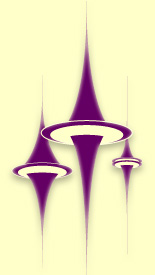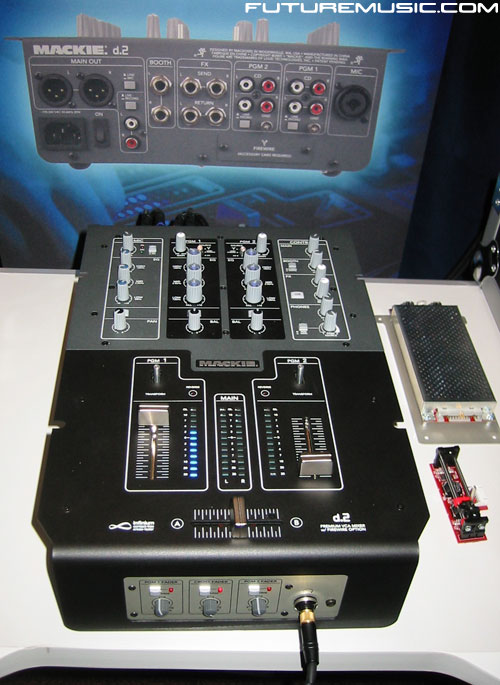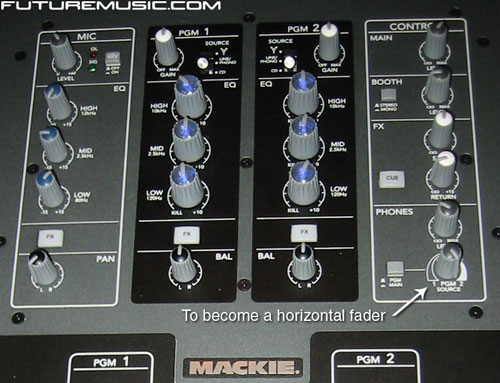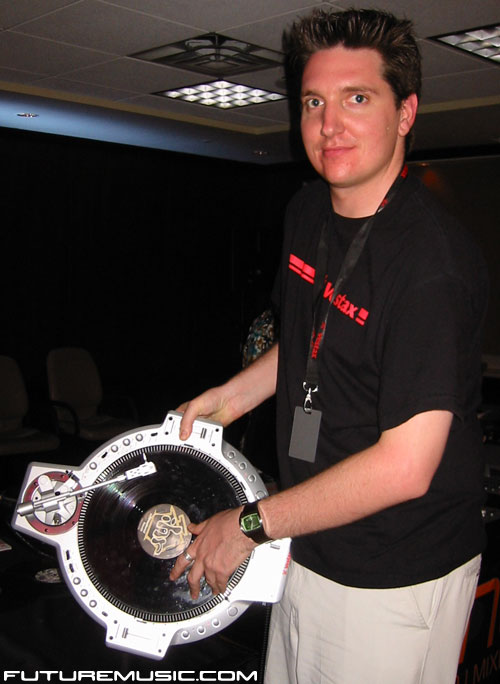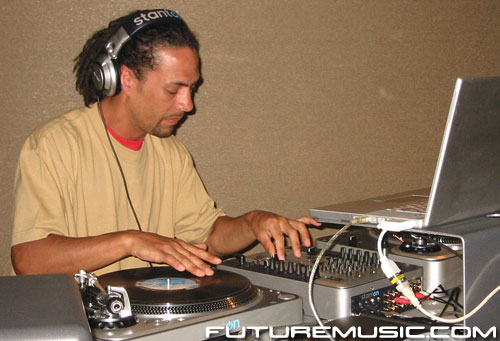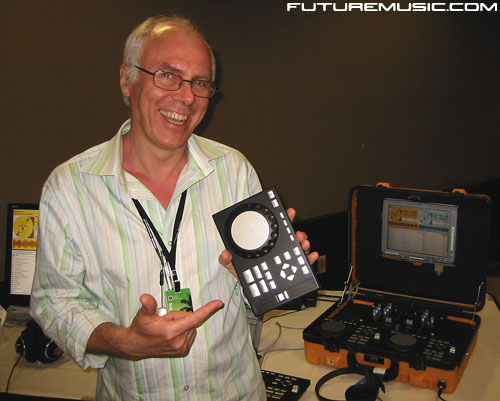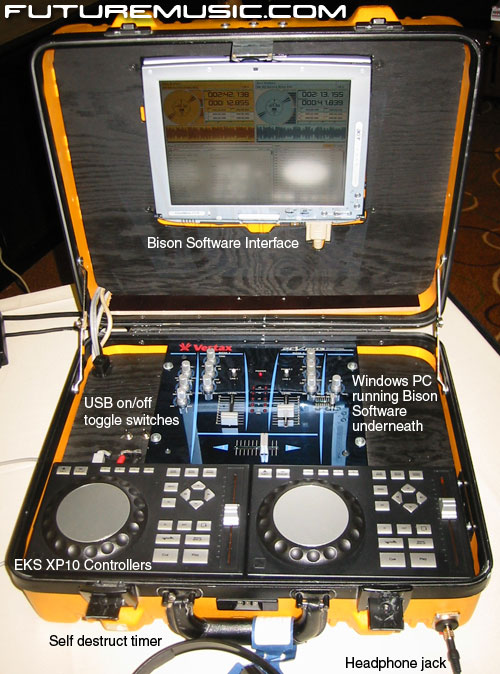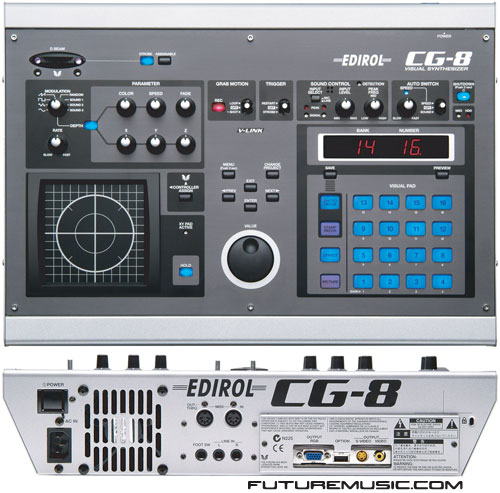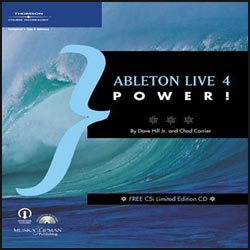|
|
|
|
|
|
|
|
|
|
|
|
|
||||||||||||||||||
 |
|||||||||||||||||||
|
|
|
|
|
April 11, 2005 ../ The 2005 WMC Gear ReportMiami Becomes Fertile Testing GroundThe Winter Music Conference has proved to be a great opportunity for manufacturers to road test their latest gear directly to the DJ/Electronic musician community. From the get-go the organizers stated publicly that the WMC Exhibit Hall would be completely open to the public. However, that was not the case. No one was being admitted without a WMC registration badge. We protested, but they were not budging, so we ventured up to the Remix Hotel that was being held in a galaxy far, far away at the Eden Roc Hotel. The Remix Hotel is a great concept and really allows the exhibitors to do some quality research by addressing the market directly. The manufacturers who embraced this concept (see below) gained some incredibly valuable feedback that they plan on implementing in new products or updates in the near future. The layout at the Eden Roc was horrendous for several of the exhibitors. Universal Audio and EKS were sequestered in a back room that many attendees didn't even know existed, even with the provided Mickey Mouse Map. Having the Remix Hotel at the Eden Roc was a terrible choice and hopefully the organizers will learn from this major blunder. From all accounts, the attendance was way off from last year's numbers, and ultimately it was the dance music artists who suffered the most by missing out on a great showcase. This year we were graced by a significant product launch by Mackie who had long been rumored to be cooking up a gourmet DJ dish. It seems that Mackie has had a DJ mixer in development for over four years, but was hampered by delays since the engineering team was constantly getting pulled off the project for other endeavors. Mackie chose to display a few working prototypes of a two channel, Firewire scratch mixer dubbed the D.2. The mixer featured a balanced layout with individual metering on the two channels and connections for hooking up two CD players and two turntables.
Vestax, Novation and Allen & Heath were all grouped into one confusing room. Allen & Heath and Novation never seemed to have anyone minding the store -- their products were haphazardly laid out and stacks of literature that you could obtain at any retailer were substituted instead of a true demonstrator. Why even bother getting a booth? What a waste of money. Thankfully, the room wasn't a total wash, Vestax had Joe "Jack" Giacopelli on hand to answer questions and provide a meaningful demonstration of Vestax's entire line including the under-marketed Carl Cox Mixer. Many were interested in the QFO which combines a scratch turntable and mixer into one unit. Designed by Q-Bert, the QFO has been a sleeper of a product. The overlooked, but very innovative, turntable arm allows the unit to play records while in a vertical position without skipping. This allows Q-Bert and others to play the QFO like a guitar. However, at $1399 street, it's not for everyone. Look for an entry level QFO model under $1000 retail this Christmas or at NAMM 2006. Also, Vestax will begin shipping a black face QFO and possibly some other colors this summer.
Many of us were very glad to see Roland attend the Remix Hotel this year. Roland's demonstrators are some of the best in the business and they put on an excellent showcase of the killer MV-8000 and the brand new V-Synth XT. Individual stations allowed the punters to get up-close-and-personal with each product line. As we mentioned in our NAMM 2005 report, the XT has a sweet vocoder effects section and tons of sonic tricks up its sleeve. In the right hands, this synth is a monster. The MV, now up to software version 3, basically came up to Akai when they weren't looking and kicked them right in the groin. When you wanted an all-in-one beat box, there were only three letters in you vocabulary, MPC. However, Roland saw an opening. The Akai's dated technology and work flow were ripe for an upset. Just when Akai went through US distribution woes, Roland pounced. The MV has really caught on with the Hip-Hop community and now beatmakers have expanded their language to include the MV moniker. Speaking of Akai, Numark showcased all of their lines including Alesis in their Hotel Room. Unfortunately, there wasn't a big, hands-on display of their new VJ gear like we hoped, but we did get our grubby fingers on their new 5 channel flagship mixer, the 5000FX. The unit was more cluttered than we expected, but the plethora of effects and sampler options made us salivate. The Alesis dog 'n' pony show featured their sexy, new Photon controllers and the Best-Value-For-Your-Virtual-Analog-Money Ion synth, but unfortunately no Fusion Workstations.
Finally, Edirol has got a brand new VJ product called the CG-8 Visual Synthesizer.
It's a performance-based, visual manipulator that lets you take JPEGs and PNG images and turn them into motion graphics. Starting with a simple image you can add over
200 different photo and overlay effects to create stunning eye-candy. But that's just the first step. Once you've created a mind bender, you can add an image modifier
which allows you to modulate the control rate, depth and waveform of the image. Assign the modifiers to the Time-Trip pad (lifted from the V-Synth) and/or the D-Beam
infrared controller for real time manipulation. Wow. However, at a rumored $3000 dollars this piece is not for your average VJ. Weighed against a laptop purchase,
the CG-8 becomes less attractive, but it does offer crisp graphics that allegedly trump most software/computer programs. Couple of obvious problems with the CG-8
include: no Video In for effecting video feeds in realtime and no real MIDI Input. True MIDI implementation would have allowed the CG-8 to receive a MIDI generated
by a DJ mixer, such as the Allen & Heath Xone:92, and sync it to the CG-8's internal LFO.

Copyright © 2005 Futuremusic® All Rights Reserved. |
|
|
 As the name correctly implies, Experiments In Sound, is Futuremusic's latest endeavor for pushing electronic music technology to the very edge of what's possible. Experiments In Sound grew out of Futuremusic's avant-garde events in New York City that featured DJ's taking mixing and live sound reinforcement to a whole new level with the very latest gear and software. Now Experiments In Sound has become The Ultimate Mix Contest...
After the tremendous success of our groundbreaking The Next Big Thing DJ Contest, Futuremusic has decided to once again create a new paradigm...
TestDrive will feature the lab results of our DJ Experiments so that everyone can get in on the action. Take the latest electronic music releases, mix vigorously
with bleeding-edge DJ production technology in a large beeker, and then cook the hell out of it!
Futuremusic wants to thank everyone who participated in The Next Big Thing 2004. John Digweed, Beatport, Alienware, M-Audio, Native Instruments, IK Multimedia, PVDJ, PK Graphics, Ableton, The DubHouse, Propellerheads, Technics, FreeFloat, The Church, PCDJ and every DJ who entered this year's event thank you. From the sheer number of quality mixes, we can tell you that dance music is thriving in the United States. The amount of outstanding talent and creativity really blew us away, and every DJ who's putting their heart, mind and soul behind the music is a winner. John Digweed has made his decision and the winner is... Think you got skills?? Then start practicing! The Next Big Thing 2005 will kick off at the end of the summer!!
News Archives
|
|
|
|
|
|
|
|
|
|
|
|
|
